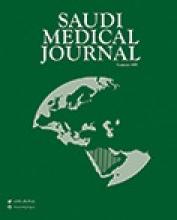Abstract
OBJECTIVE: To determine the effect of iodine containing antiseptics on thyroid function for the first 3 weeks in non-very-low-birth weight preterm and term babies, and to evaluate their thyroid function and behavioral status 7 years later.
METHODS: Cohort I (between the years 1997-1998) was studied in 57 preterm (30-35 weeks) and 29 term newborns, 7 years later cohort II (in the year 2005) was created from same 28 preterm and 18 term infants at Behcet Uz Children's Hospital, Izmir, Turkey. Serum thyrotropin, triiodothyronine, total and free thyroxine were measured on the first, seventh, and twenty-first days (cohort I), and at the age of 7 (cohort II). In respect of used antiseptics, the patients were divided into 2 groups. The evaluation of patients was performed according to the Turgay Diagnostic and Statistical Manual for Psychiatric Disorders, 4th edition based child and adolescent behavior disorders screening and rating scale.
RESULTS: On the seventh day of life, iodine-exposed newborns had significantly higher mean thyrotropin levels and lower free thyroxine, total thyroxine, and triiodothyronine levels. On the twenty-first day, thyrotropin levels of iodine-exposed newborns were similar to controls. The cohort II results showed normal thyroid function in all patents with increased hyperactivity among children born prematurely, and particularly experienced exposure to iodine.
CONCLUSION: Iodine excess may cause transient hypothyroxinemia in preterm babies (>30 weeks gestational age, >1.5 kg) and this may be one of the reasons for behavior problems observed later in these children. Iodine excess may cause transient hypothyroxinemia in preterm babies (>30 weeks gestational age, >1.5 kg) and this may be one of the reasons for behavior problems observed later in these children.
- Copyright: © Saudi Medical Journal
This is an open-access article distributed under the terms of the Creative Commons Attribution-Noncommercial-Share Alike 3.0 Unported, which permits unrestricted use, distribution, and reproduction in any medium, provided the original work is properly cited.






